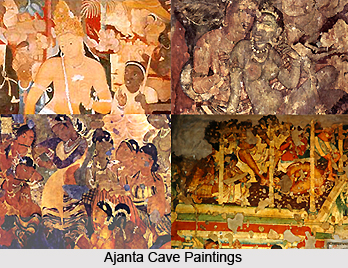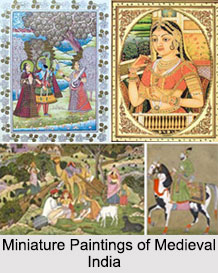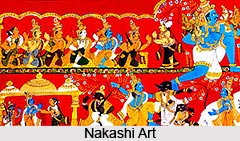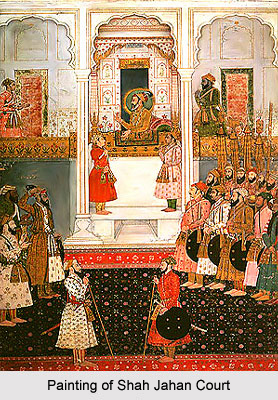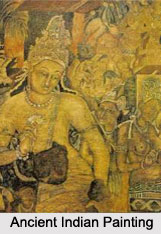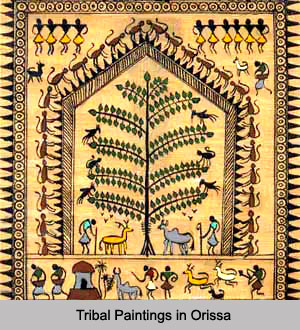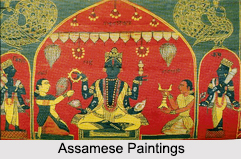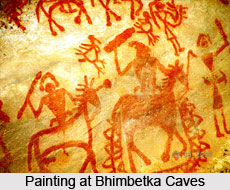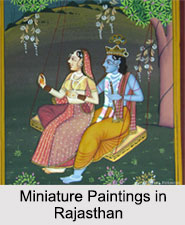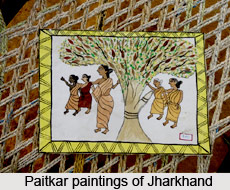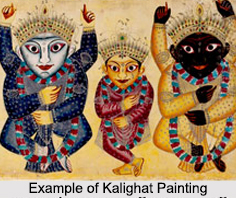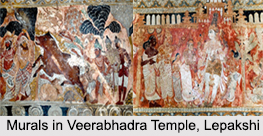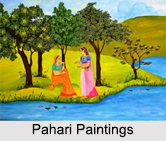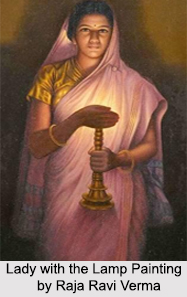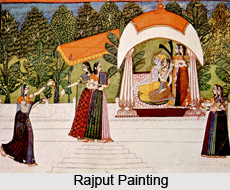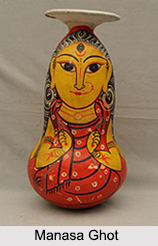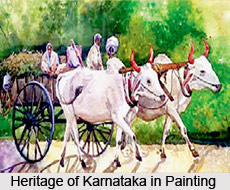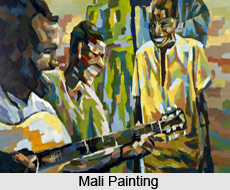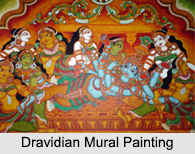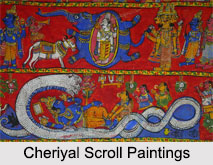Painting Schools of West India are the numerous assortments of paintings that have been housed under the Western domain. Rajput painting stands as the logo of simplicity. In the sphere of painting there was a development of the Rajput and the Pahari schools, after the advent of the Muslims in the fifteenth century. In this century two factors revolutionized the practice of painting in Northern India. Firstly it is the rise of a vernacular literature consequent upon the development of Bhakti and secondly it is the introduction of paper. Beginning in the late 16th century Rajput painting thus amidst its lines, curves, colours and hues ideally coincided with the renaissance of Hindu literature where the Bhakti cult indeed played a predominant role.
The Rajput art was patronised by the Kings. Every ruler had his own artists. The main centres of this art were Malwa, Mewar, Udaipur, Ajmer, Jaipur, Jodhpur and Bikaner, Kishengarh, Nathadwara, Kota-Bundi, Baanpur, Datia. This art reached the pinnacle by the end of the seventeenth century. Much of its delicacy was derived from the Mughals. The main theme of Rajput paintings was Ragmala. The various `Ragas`, have almost been personified in the paintings. The other themes were Krishna-Lila, Nayikabheda, Rituchaitra, court scenes, rulers` portrait and scenes of royal pursuits, such as festivities, processions and hunting. Rajput paintings are characterized by its primitive vigour and strength; directness and simplified formula of expression; Traditional motifs; Gay and brilliant colour-scheme and decorativeness. The Rajput art probes the innermost self. The developed Rajput paintings in the seventeenth century have forms as definite as those of the sonnet or the novel. It portrays the states of love or the type of hero and the heroine. The Rajput paintings are distinguished by their gorgeous colour-schemes. Gestures are means of expression and colour combinations form the elements of composition.
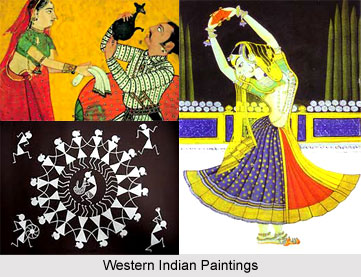 Warli painting is a very popular form of tribal painting in India and belongs to Mumbai, thus essentially a West Indian Painting. Their major themes include the harvest season, celebration, wedding, rituals and births. Warli Paintings are characterised by the simplistic style which is employed to convey the profoundest things. Colours used in the Warli paintings are limited to stark white opposite to earthen backgrounds. Most of the paintings dominated by geometrical designs, and crooked lines and dots form the units of these compositions are monochromatic tribal paintings which express different types of folk imaginations, customs and beliefs. The moods and whims of the life led by the tribes form interesting themes for the Warli Paintings. They are more than mere designs on walls, and form the authentic presentation of a way of life. However, the philosophy of a way of life, especially those of tribal societies, is best depicted through colourful images.
Warli painting is a very popular form of tribal painting in India and belongs to Mumbai, thus essentially a West Indian Painting. Their major themes include the harvest season, celebration, wedding, rituals and births. Warli Paintings are characterised by the simplistic style which is employed to convey the profoundest things. Colours used in the Warli paintings are limited to stark white opposite to earthen backgrounds. Most of the paintings dominated by geometrical designs, and crooked lines and dots form the units of these compositions are monochromatic tribal paintings which express different types of folk imaginations, customs and beliefs. The moods and whims of the life led by the tribes form interesting themes for the Warli Paintings. They are more than mere designs on walls, and form the authentic presentation of a way of life. However, the philosophy of a way of life, especially those of tribal societies, is best depicted through colourful images.
Phad painting is a beautiful specimen of Indian cloth painting, which has its origin in Rajasthan. This painting can be simply described as a large painting on Khadi, which venerates the deeds of a hero. The smaller version of phada is known as phadakye. Phada painting has come to be regarded as one of the most sought after folk paintings in the world of art and culture, for their unique beauty and chronicling character.
Generally, the life events of the Rajasthani heroes like Goga Chauhan, Prithaviraj Chauhan, Amar Singh Rathor, Tejaji, and many others were illustrated on the Phadas in the earlier times. However, nowadays, the stories from the life of Papuji, and Narayandevji are primarily depicted. Paintings transcend time to recreate the story of the brave Rajput warrior Pabuji. Adorning a 30 feet long scroll, these paintings show Pabuji`s victory and the life style of his time. The colours employed are generally vegetable dyes and are used in a fixed order starting from orange-yellow to brown, green, and red and finally black.
Amidst the length and breadth of western India between the 10th to 12th centuries what rammed home was Miniature painting that even traces the development of the same. These miniscule paintings were part of manuscripts and were written at the period and illustrated the subjects of the manuscripts. These miniatures are found in some Hindu and Jaina manuscripts and are of 2 to 4 inches in size. It was during 12th to 17th Century that western Indian miniature paintings flourish very rich. Modern western Indian states; Gujarat state and Rajasthan state were integrated into western India of that time. Particular manuscript miniature painting developed in the western part of India that is up-to-the-minute state of Gujarat. From 17th century "Rajput miniature painting" urbanized in the western part of India that is modern western state of Rajasthan. Miniature paintings are beautiful handmade paintings, which are quite colourful but small in size. The striking point about these paintings is the intricate and delicate brushwork, which lends them a unique identity. The colours are handmade, from minerals, vegetables, precious stones, indigo, conch shells, pure gold and silver. The most common theme of the Miniature painting of India comprises of the Ragas i.e., the musical codes of Indian classical music.
